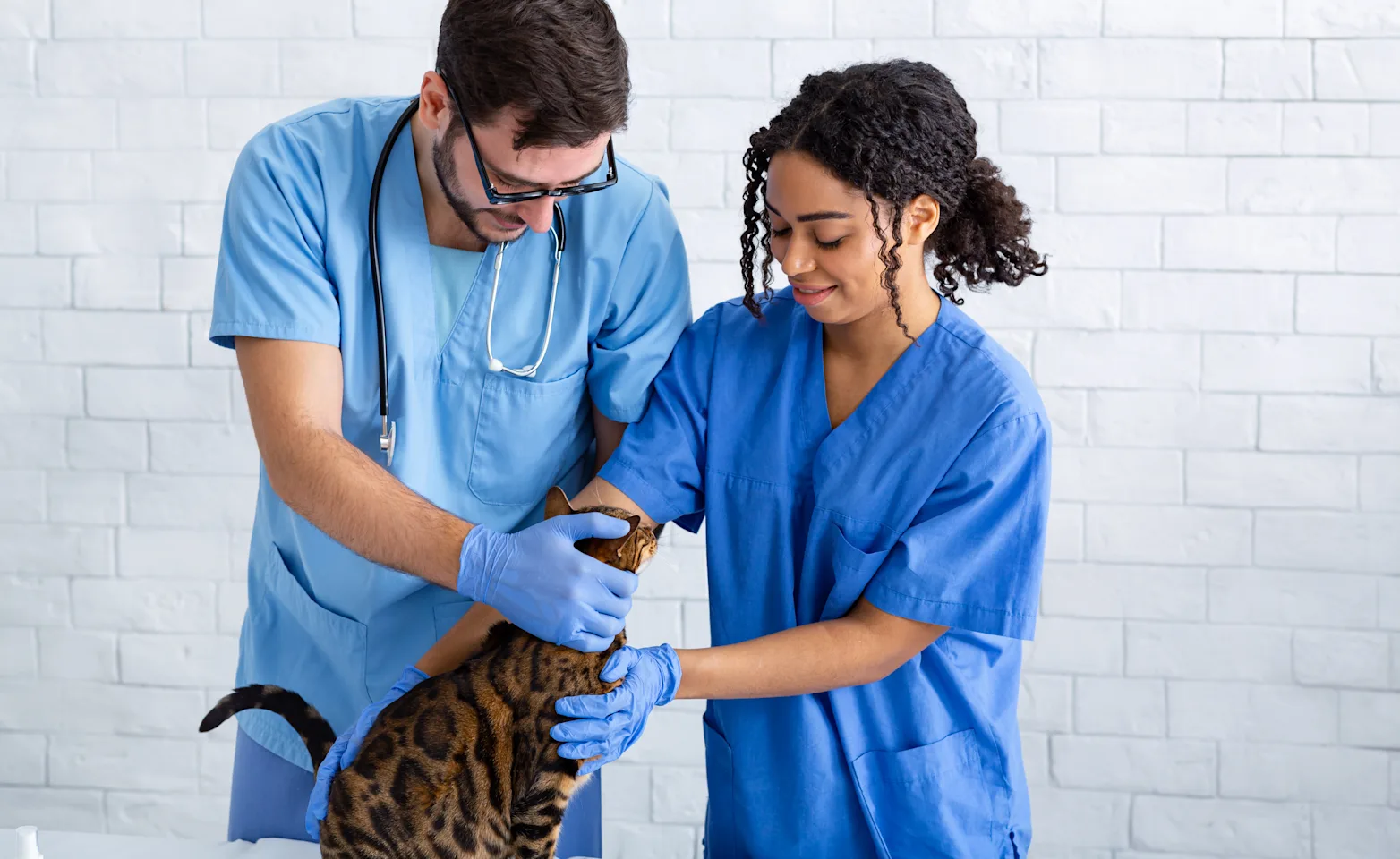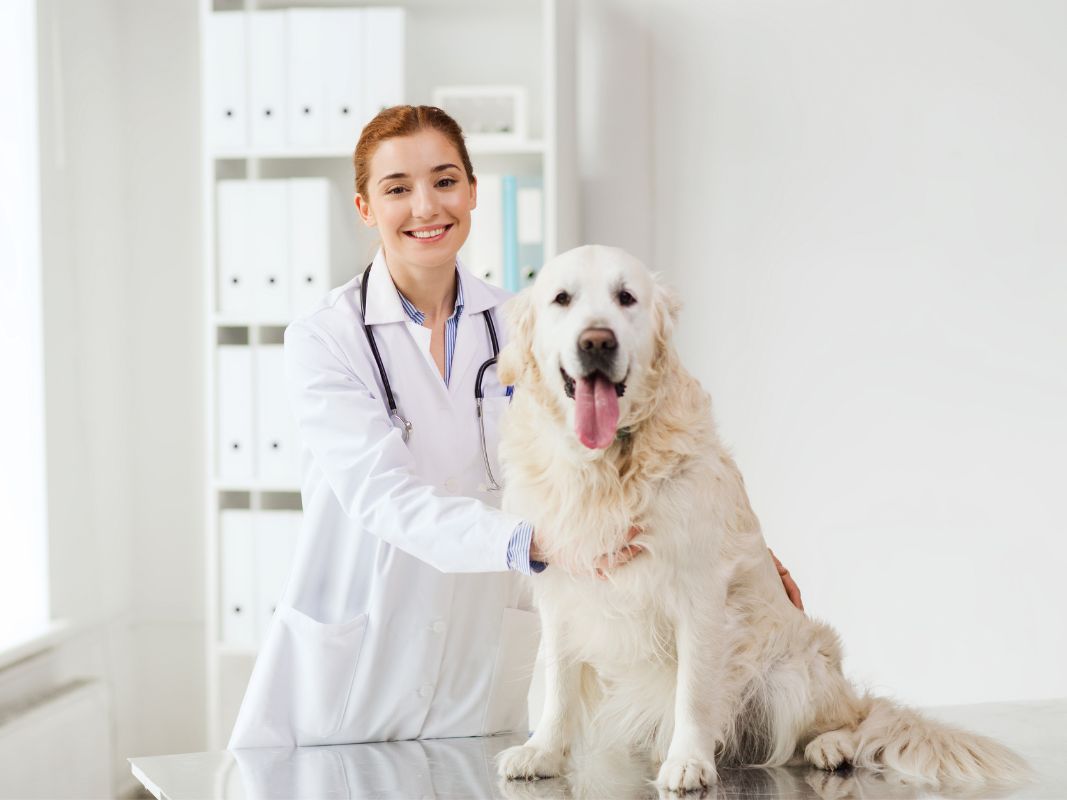Most Common Emergency Surgeries Performed at animal emergency care bellingham Centers
Most Common Emergency Surgeries Performed at animal emergency care bellingham Centers
Blog Article
Why Animal Rehabilitation Is Critical: the Perks of Vet Solutions for Your Pet dog's Recovery
Animal recovery is an essential component of recovery for pet dogs encountering injuries or handicaps. Veterinary services supply crucial support with customized rehab strategies that deal with individual needs. These plans usually consist of pain management, physical therapy, and dietary guidance. Recognizing the various facets of animal rehab can brighten its relevance in boosting healing results. What specific benefits do these services use, and exactly how can they change a pet dog's healing journey?
Understanding Pet Rehabilitation
Pet rehab incorporates a range of healing methods targeted at restoring the wellness and performance of hurt or handicapped pets. This field incorporates different methods, consisting of physical therapy, hydrotherapy, and job-related treatment, tailored to satisfy the details requirements of each pet. Rehabilitation professionals examine a pet's condition, developing personalized therapy plans that might include workouts to strengthen muscle mass, boost movement, and boost total well-being. The process not only focuses on physical recuperation however additionally addresses emotional and behavioral aspects. Animals usually experience stress and anxiety and anxiousness adhering to an injury, making psychological health and wellness considerations crucial in recovery. By creating a helpful environment, specialists can aid animals regain their confidence and adapt to their brand-new circumstances. Via regular sessions, pets can experience significant improvements, ultimately causing a far better lifestyle. Generally, recognizing pet rehab highlights its value in promoting recuperation and boosting the bond between pets and their owners.
The Role of Discomfort Monitoring in Recuperation
Just how necessary works discomfort administration in the recovery of hurt pets? It plays a crucial duty in facilitating recovery and improving the overall well-being of pet dogs. Correct pain administration not just reduces pain however additionally advertises flexibility, making it possible for pets to take part in rehabilitation activities required for recuperation. When pain is efficiently handled, pets often tend to respond favorably to treatment, resulting in quicker recovery outcomes.Veterinarians use various approaches to evaluate and address pain, including drugs, acupuncture, and alternative treatments. By customizing discomfort management strategies to the private requirements of each pet, vets can assure that animals remain tranquil and cooperative throughout their healing trip. Moreover, decreasing pain helps in reducing stress, which can hinder recovery and prolong recovery times. To summarize, efficient discomfort monitoring is essential for enhancing the recovery procedure and improving the high quality of life for injured pets.
Physical Therapy Methods for Animals
Many physical therapy methods are available to assist in the rehabilitation of pet dogs recouping from injuries or surgical procedures (tplo surgery for dogs). These techniques can boost flexibility, ease discomfort, and promote healing. Healing workouts, for instance, aid strengthen muscle mass and boost joint feature, allowing pets to reclaim their physical abilities gradually. Hands-on treatment, that includes massage therapy and mobilization, can minimize tension and boost flow, contributing to a quicker recovery.Other techniques such as passive variety of movement workouts encourage joint versatility and reduce rigidity. Additionally, electric excitement therapy may be employed to stimulate nerves and muscles, promoting recovery and discomfort relief.Veterinary professionals usually tailor these methods to each pet dog's certain requirements, ensuring a complete recovery strategy. By executing these physical therapy approaches, pet dogs can experience improved top quality of life and a more successful healing from their ailments. The combination of these techniques into rehabilitation programs is crucial for perfect recovery outcomes
Advantages of Hydrotherapy for Recovery
Hydrotherapy uses considerable advantages in animal rehab, specifically in enhancing movement. This water-based therapy advertises discomfort alleviation while providing comfort to wounded or recuperating pet dogs. Additionally, it helps with strength-building workouts that add to total physical recuperation.
Boosted Movement Improvement
As pets recover from injuries or surgeries, enhanced mobility usually ends up being a primary objective of their rehab. Hydrotherapy acts as a useful device in attaining this goal. With water-based workouts, animals can engage in low-impact activities that facilitate joint movement and strengthen muscles without the tension of weight-bearing activities. The buoyancy of water supports their bodies, permitting increased variety of motion and flexibility renovation. In addition, hydrotherapy encourages far better balance and sychronisation, which are important for bring back normal motion patterns. Normal sessions can cause considerable development in an animal's physical abilities, eventually improving their lifestyle. This strategy not just aids in recuperation yet likewise promotes a much more active and meeting way of living post-rehabilitation.
Pain Alleviation and Convenience

Relief from discomfort is a crucial facet of pet recovery, and hydrotherapy greatly adds to this procedure. By utilizing water's buoyancy, hydrotherapy decreases joint stress and anxiety and eases discomfort during activity. This therapeutic technique offers a comforting environment where family pets can engage in gentle workouts without the full weight of their bodies impacting their recovery. The warm water promotes blood circulation, advertising healing while also encouraging leisure. Furthermore, hydrotherapy sessions can be tailored to satisfy the particular needs of the pet, making certain excellent comfort. As family pets experience reduced discomfort and increased comfort levels, their overall desire to take part in rehab tasks frequently improves, causing a more effective healing trip. Hydrotherapy serves as a critical tool in enhancing pain alleviation and comfort during rehabilitation.
Strength Structure Exercises
Strength-building exercises play a crucial duty in the recovery process, with hydrotherapy offering one-of-a-kind advantages. This type of therapy utilizes water resistance to improve muscular tissue toughness without placing excessive stress on the joints. The buoyancy of water supports the pet dog's weight, enabling much safer activity and boosted series of movement. In addition, hydrotherapy can improve cardio health and advertise total fitness, assisting in quicker recuperation from injuries or surgical procedures. The controlled environment additionally minimizes the risk of reinjury, making it a perfect option for animals needing recovery. Regular hydrotherapy sessions can lead to visible enhancements in flexibility, toughness, and endurance, inevitably boosting the pet's lifestyle and capability to return to regular activities.
Relevance of Personalized Rehabilitation Plans
Custom-made rehab strategies are important for resolving the special requirements of each pet, guaranteeing customized treatment techniques. These plans enable effective progress monitoring and needed modifications, fostering perfect recovery outcomes. In addition, an all natural approach can improve the total wellness of the animal, advertising a more complete recovery experience.
Individualized Therapy Approaches
While several rehabilitation programs take on a one-size-fits-all approach, the unique requirements of each pet demand personalized treatment prepare for ideal recovery. Customized rehab strategies think about different factors, consisting of the animal's species, age, clinical background, and certain injuries or problems. By tailoring treatments, veterinarians can deal with each family pet's one-of-a-kind challenges, maximizing the effectiveness of the rehab procedure. Embellished strategies might include various methods such as physical therapy, hydrotherapy, and restorative workouts, guaranteeing that the therapy aligns with the pet's capabilities and progression. In addition, personalized approaches cultivate a stronger bond in between the pet and the caretaker, advertising a more appealing and supportive recovery environment. Inevitably, customized treatment is crucial for achieving finest feasible outcomes in animal rehab.
Progress Tracking and Adjustments

Holistic Healing Strategies
Alternative recovery methods are important for effective animal rehab, as they highlight the value of individualized treatment strategies tailored to each animal's specific demands. This approach takes into consideration the physical, psychological, and environmental factors influencing healing. Customized rehabilitation plans may include a mix of physical therapy, dietary counseling, and behavior adjustments. By dealing with these diverse facets, veterinarians can enhance the total well-being of the pet and advertise a quicker recuperation. Such customized methods facilitate a much deeper understanding of the pet's special obstacles, leading to extra reliable interventions. Ultimately, holistic healing methods not just boost physical wellness but additionally add to the pet's psychological and emotional security, ensuring a comprehensive rehab experience.
The Effect of Nutrition on Healing
Nourishment plays a necessary function in the healing process for restoring animals, typically determining the speed and efficiency of recovery. A well-balanced diet gives the necessary nutrients that support cells fixing, boost the immune system, and improve overall vitality. Protein is particularly essential, as it helps in muscle mass restoring and recuperation from injuries. Crucial fats, vitamins, and minerals also add to lowering swelling and promoting optimum cellular function.Veterinarians often highlight the significance of customized nutrition plans, taking into consideration each pet's certain requirements, age, and health and wellness condition. Appropriate hydration is equally essential, as fluids help with nutrient absorption and aid in detoxification. By ensuring that pet dogs get ideal nutrition, caretakers can substantially enhance their chances of an effective healing, leading to much better long-term health and wellness end results. Ultimately, nourishment offers as a foundational element in the rehabilitation journey, sustaining pets in restoring stamina and resilience post-injury or illness.
Success Stories: Pet Dogs That Grew After Rehabilitation
Effective rehab tales are plentiful, showcasing the resilience of pet dogs who have gotten rid of substantial obstacles. Take, for example, Bella, a gold retriever who suffered extreme injuries from a car mishap. With devoted vet treatment and a comprehensive rehab program, she reclaimed her wheelchair and returned to her lively self, much to her owner's joy. Similarly, Max, an elderly cat identified with arthritis, experienced remarkable renovation through read more a mix of physical treatment and pain administration. His newly found dexterity permitted him to appreciate his favored sunbathing spots once more. One more motivating instance is that of Coco, a rescued greyhound who got over anxiety through therapy and socializing techniques, enabling her to flourish in her brand-new home. These success tales exhibit the transformative power of animal recovery, highlighting that with the best support, pets can not only recover but lead satisfying lives, improving the bonds they share with their households.
Frequently Asked Questions
For how long Does the Rehabilitation Process Commonly Consider Animals?
The recovery process for family pets usually differs based upon the injury or condition, varying from a few weeks to several months. Specific progress, therapy type, and commitment to workouts substantially influence the general period of recovery.
Exist Any Dangers Connected With Pet Rehab?
Pet rehabilitation might carry risks such as worsening of injuries, inappropriate methods resulting in pain, or inadequate monitoring throughout healing. These elements can prevent development and affect the general effectiveness of the rehab process.

Can All Pets Gain From Rehab Services?
Not all pets may need rehab, but lots of can benefit considerably. Rehab services can boost wheelchair, relieve discomfort, and improve total wellness, specifically for those recuperating from injuries, surgical procedures, or chronic problems.
Just How Can I Prepare My Animal for Recovery Sessions?

What Signs Suggest My Pet Dog Demands Recovery?
Indicators suggesting an animal may need rehabilitation include trouble walking, hopping, decreased task degrees, unwillingness to jump, or indications of discomfort. Observing these actions can prompt owners to look for specialist evaluation and treatment for their family pets.
Report this page